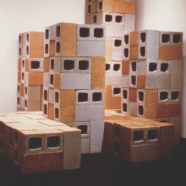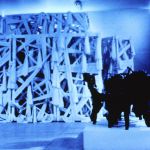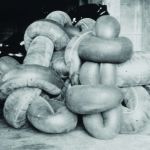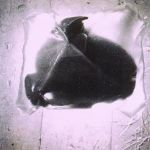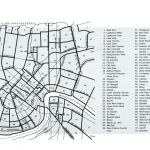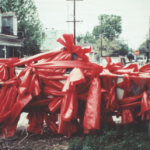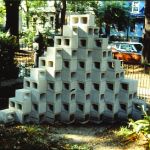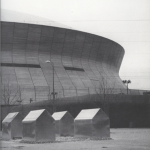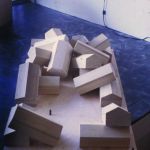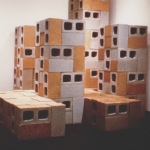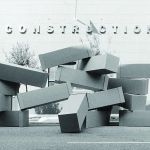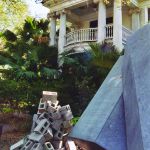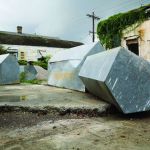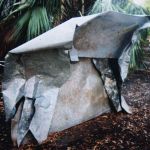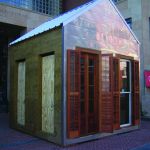Portfolio: Containers, Wrapping, Tying, Architectural Form, And Modular Thinking
- 1962
- 1964
- 1964
- 1974
- 1975
- 1978
- 1978
- 1979
- 1988
- 2001
- 2005
- 2005
- 2005
- 2008
While at the Pratt Institute, Brooklyn, New York, in 1956, I began experimenting with containers and wrapping as forms of sculpture. This work continued and the best examples of this work are a wrapped armoire, a wrapped and tied room, and cardboard boxes covered in plaster and papier-mâché. This work continued with wrapping of other furniture and objects with a variety of materials. Then in 1963, while living and teaching in Franconia, New Hampshire, I placed dead rats, dead birds, and a dead cat in plastic bags filled with formaldehyde.
In 1972, I led an urban planning group in New Orleans with the firm of Curtis + Davis. We were engaged with preparing a city-wide housing and neighborhood preservation plan for the city of New Orleans. We conducted an open planning process working with residents to identify neighborhoods and issues with the many and diverse neighborhoods. We also focused on the indigenous and historical architecture and building types.
The shotgun house form, in single and double units, is the ubiquitous New Orleans house form and is also common throughout the Gulf South and Caribbean with roots in Africa and the ancient Mediterranean. We wrote a book on the rehabilitation and restoration of shotgun homes. I began working with the shotgun house form as a model element for sculpture in 1975. During the past forty years the shotgun form has been one of several major directions in my work.
Another major and related modular element is the concrete masonry unit (CMU) or cinder on concrete block. Unlike the shotgun, the CMU is the most ubiquitous building material in the world. I was intrigued with its use in some of the most ancient urban places in the world. I began to make sculpture with concrete blocks after returning from an urban planning assignment in Iran in 1977.
These two forms, the shotgun and CMU, are used as modulars or building blocks for sculpture and architecture. I am currently working on an enlarged CMU form turned on its side so that the two holes become two separate occupiable spaces one can enter. These forms are elements in many design and construction projects, including large steel industrial and other structures. My principal use of these minimized forms are models for larger conceptual sculpture projects I call archisculptures. A melding of architecture and sculpture, much as the wood or cardboard box, shipping container, plastic box, and plastic trash bag are containers for all forms of objects and refuse. I also continue working with boxes and bags as models for incorporation in archisculpture.


